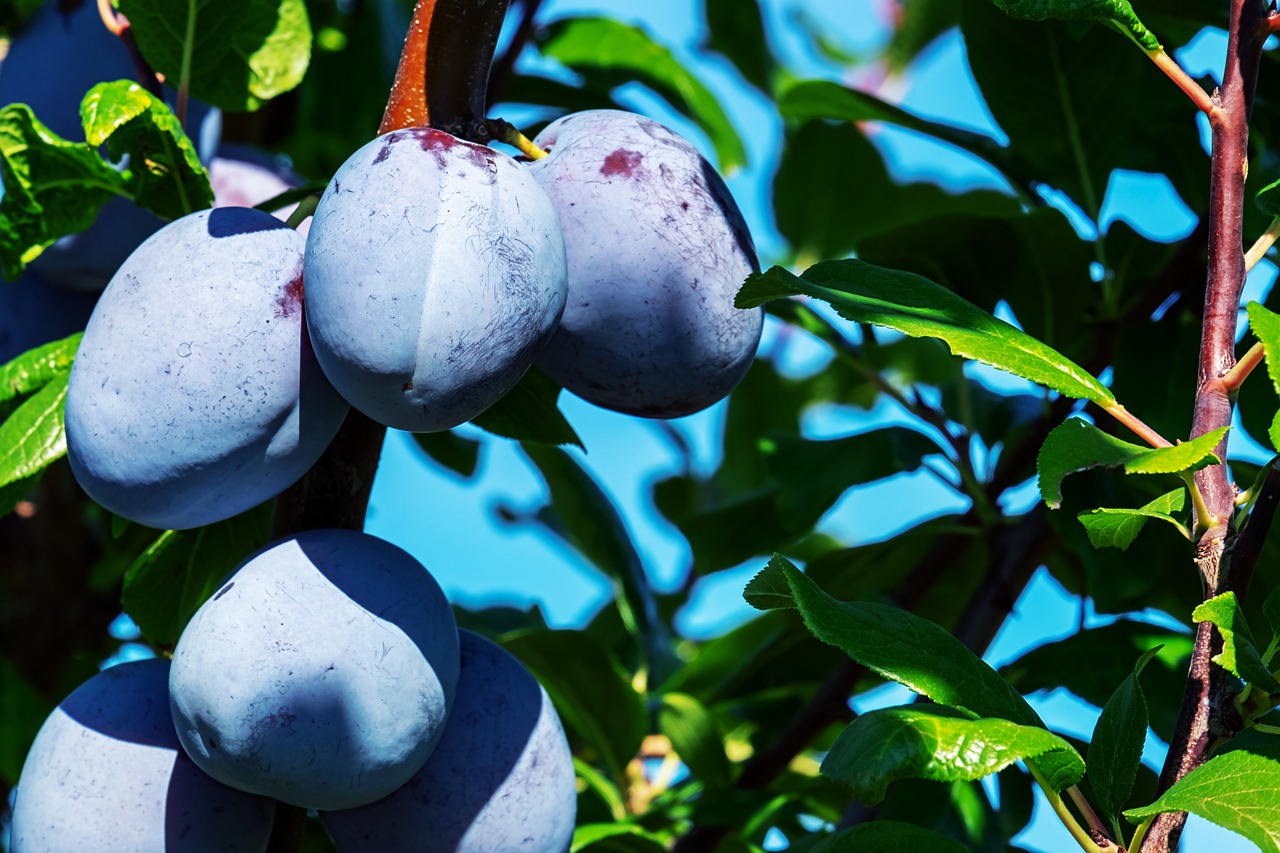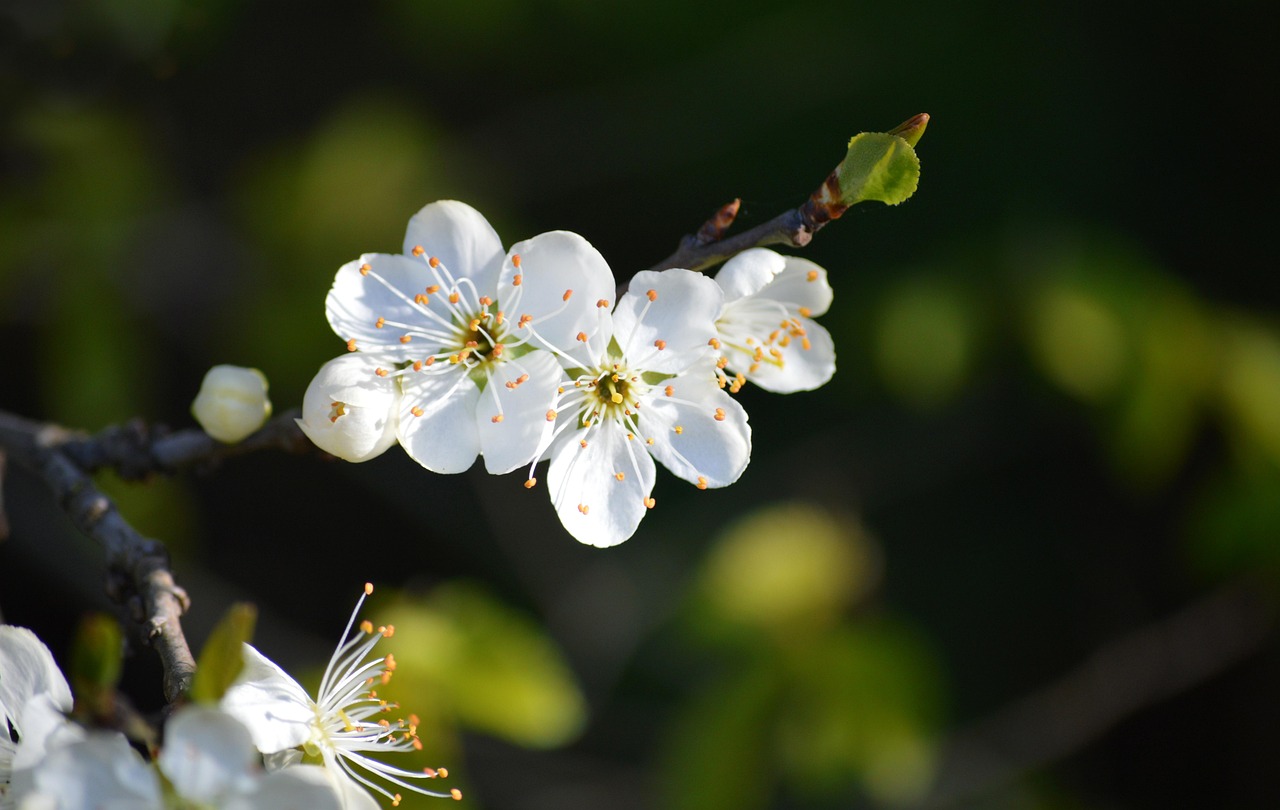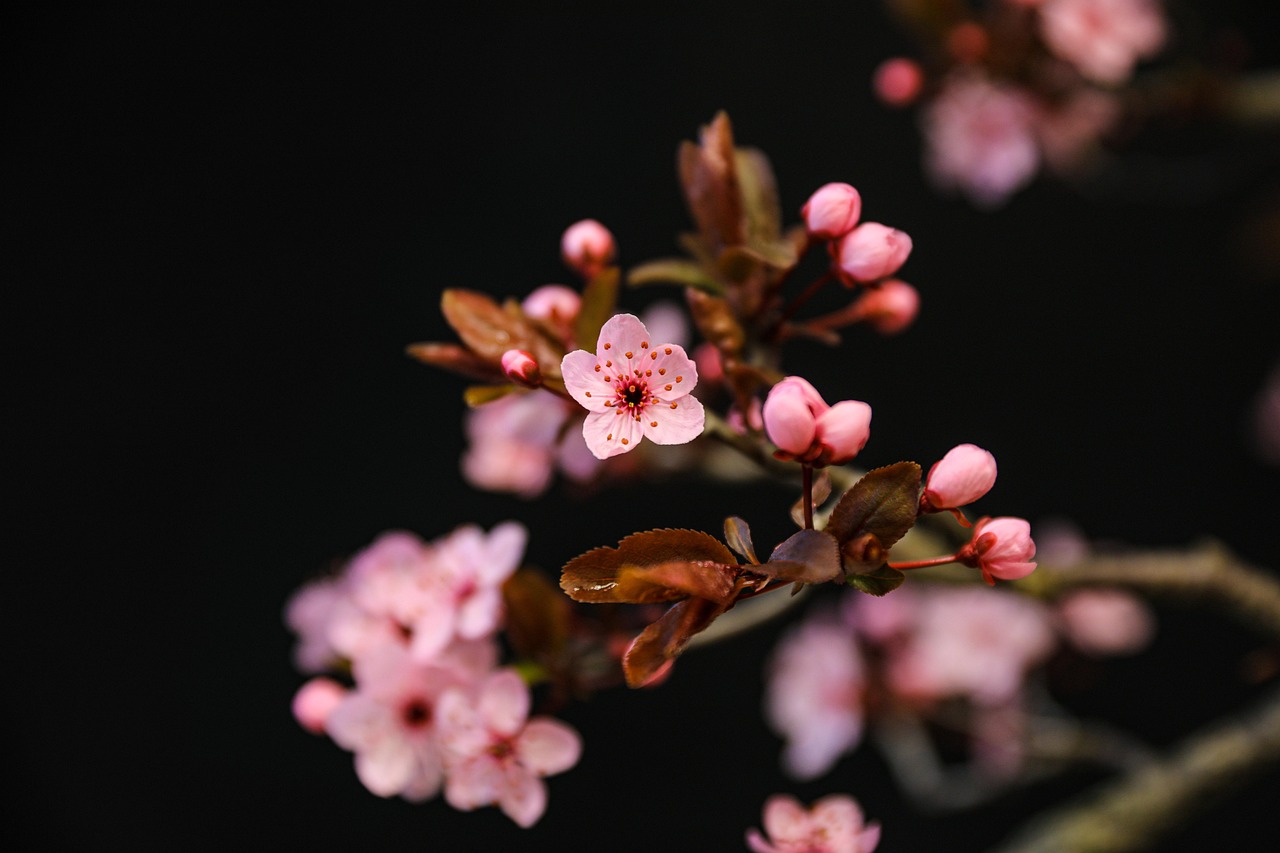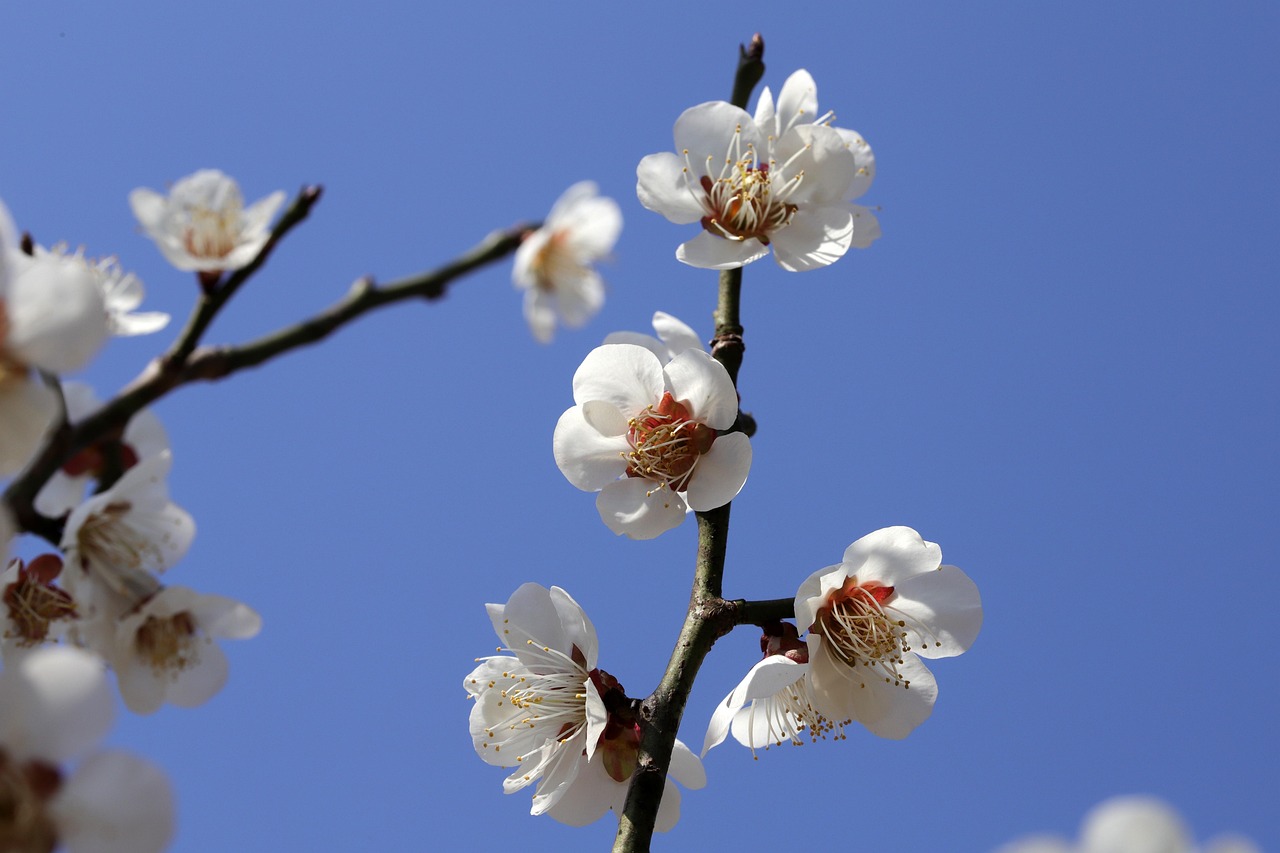Pruning Japanese plum trees is essential for healthy growth and vibrant blossoms. Proper technique enhances air circulation, encourages stronger branches, and promotes fruitful yields. Timing and method are crucial for optimal results.
Understanding Japanese Plum Trees
Japanese plum trees, known scientifically as Prunus salicina, are a popular choice among gardeners. They are celebrated for their beautiful flowers and delicious fruit. These trees thrive in temperate climates and require specific care to ensure they flourish. Pruning plays a vital role in maintaining their health and maximizing their blooming potential.

Their blossoms typically appear in early spring, providing a stunning display of pink and white flowers. However, without proper pruning, the tree may become overgrown, leading to poor air circulation and reduced fruit production. Understanding the key aspects of pruning is essential for any gardener looking to cultivate vibrant blossoms.
Benefits of Pruning
Pruning Japanese plum trees offers numerous advantages:
- Improves air circulation, reducing the risk of diseases.
- Encourages robust branch growth, leading to a stronger structure.
- Increases sunlight exposure for all parts of the tree.
- Enhances overall fruit production and quality.
- Facilitates easier harvesting.
When to Prune Japanese Plum Trees
The timing of pruning significantly affects the health and productivity of Japanese plum trees. The best time to prune is during the late winter or early spring, just before new growth begins. This timing allows you to remove dead or damaged branches without interfering with the tree’s blooming cycle.

Here are some key points regarding pruning timing:
| Season | Action | Reason |
|---|---|---|
| Late Winter | Major Pruning | Removes dead or damaged wood before new growth starts. |
| Early Spring | Light Pruning | Shaping and thinning to promote better air circulation. |
| Summer | Maintenance | Trimming back excessive growth to maintain shape. |
Tools Needed for Pruning
Having the right tools is essential for effective pruning. Here are some tools you will need:
- Pruning Shears: Ideal for cutting small branches up to ½ inch in diameter.
- Loppers: Perfect for larger branches that are too thick for shears.
- Saw: A pruning saw is necessary for very thick branches.
- Gloves: Protect your hands while working with sharp tools.
- Ladder: Useful for reaching high branches safely.
The Pruning Process
The process of pruning Japanese plum trees can be broken down into several key steps:

- Assess the Tree: Begin by examining the overall structure. Look for damaged or dead branches that need removal.
- Remove Dead or Damaged Wood: Cut back any branches that are dead or diseased. This helps prevent the spread of disease.
- Thin Out Crowded Areas: Remove branches that are crossing or too close together. This improves air circulation.
- Shape the Tree: Aim for an open center structure. This allows light to penetrate throughout the tree.
- Maintain Balance: Ensure that no side is heavier than the other. Balanced trees are less likely to suffer from breakage.
Each cut should be made with precision. Avoid leaving large stubs, as they can become entry points for pests and diseases. Instead, make clean cuts just above a bud or branch junction.
Common Mistakes to Avoid
While pruning can greatly benefit Japanese plum trees, there are common mistakes that gardeners should avoid:
- Pruning Too Late: Waiting until after new growth starts can harm the blossoms.
- Over-Pruning: Removing too much foliage can stress the tree and reduce fruit production.
- Poor Cutting Technique: Improper cuts can damage the tree and lead to disease.
Caring for Japanese plum trees through thoughtful pruning ensures they remain vibrant and productive. By understanding when and how to prune, you can enhance not only the beauty but also the health of your trees.

Techniques for Effective Pruning
Pruning techniques can vary based on the age and condition of the Japanese plum tree. Knowing the appropriate methods will help ensure you achieve the best results.
Types of Pruning Techniques
There are several techniques that gardeners can use when pruning Japanese plum trees. Each method serves a different purpose:
- Heading Cuts: This technique involves cutting back the tips of branches to encourage bushier growth. It is especially useful for young trees.
- Thinning Cuts: This method removes entire branches back to their point of origin. It helps improve light penetration and air circulation.
- Reduction Cuts: Used to reduce the length of a branch while maintaining its structure, this technique is helpful for controlling the height of a tree.
- Cleaning: This involves removing dead, damaged, or diseased wood to prevent pests and diseases from spreading.
Step-by-Step Pruning Guide
Follow these steps to prune your Japanese plum tree effectively:
- Gather Your Tools: Ensure you have all necessary tools ready before starting.
- Inspect the Tree: Take a close look at the tree’s structure and identify areas that need attention.
- Make Initial Cuts: Start with cleaning cuts to remove any dead or diseased wood.
- Perform Thinning: Remove branches that are too close together, focusing on those that cross each other.
- Apply Heading Cuts: Use this method on young trees to promote bushier growth.
- Final Inspection: After completing the pruning, check to ensure the tree has an open center and balanced structure.
Understanding Growth Patterns
To prune effectively, it’s essential to understand how Japanese plum trees grow. These trees typically develop a central leader structure, which is a single main trunk with lateral branches.
Growth Phases
The growth phases of a Japanese plum tree can be broken down into three stages:
| Stage | Description | Pruning Focus |
|---|---|---|
| Young Trees | Trees that are newly planted or within their first few years of growth. | Encouraging strong scaffolding branches and shaping the tree structure. |
| Mature Trees | Trees that have established their primary structure and are producing fruit. | Focusing on thinning for air circulation and enhancing fruit production. |
| Old Trees | Trees that may show signs of decline or reduced fruit production. | Restorative pruning to rejuvenate and promote new growth. |
Post-Pruning Care
Once you have completed the pruning process, proper care is vital for the recovery of the tree. Here are some essential post-pruning care tips:
- Watering: Ensure the tree receives adequate water after pruning, especially during dry spells. This supports recovery and encourages new growth.
- Mulching: Apply a layer of mulch around the base of the tree. This helps retain moisture and suppress weeds.
- Pest Management: Keep an eye out for pests that may target freshly pruned trees. Implement preventive measures as needed.
- Nutrient Boost: Consider applying a balanced fertilizer in early spring to support new growth.
Identifying Health Issues
While pruning, it’s crucial to identify any health issues that may affect your Japanese plum tree. Recognizing these problems early can prevent further damage.
Common Pests and Diseases
Here are some common pests and diseases that may impact your Japanese plum tree:
- Purple Leaf Plum Moth: This pest can cause significant damage by boring into branches. Look for signs of frass, or sawdust-like debris.
- Bacterial Canker: A disease that can lead to dead limbs and overall decline. Look for dark, sunken lesions on branches.
- Brown Rot: A fungal disease that affects fruit, causing it to rot while still on the tree. Proper sanitation and removal of affected fruit can help manage this issue.
If you notice any signs of pests or diseases, consult with a local horticulturist or extension service for appropriate management strategies. Keeping your Japanese plum tree healthy ensures vibrant blossoms year after year.
Seasonal Care for Japanese Plum Trees
Japanese plum trees require specific care throughout the year to ensure they thrive. Understanding the seasonal needs of these trees helps maintain their health and promotes vibrant blossoms.
Spring Care
Spring is a critical time for Japanese plum trees as they begin to bloom and grow. Here are some important considerations for spring care:
- Fertilization: Apply a balanced fertilizer as new growth appears. This will support healthy foliage and fruit development.
- Watering: Ensure the tree receives adequate water, especially if rainfall is insufficient. Deep watering encourages strong root growth.
- Pest Monitoring: Keep an eye out for common pests such as aphids and spider mites. Early detection allows for timely intervention.
- Mulching: Add a layer of organic mulch around the base to retain moisture and suppress weeds.
Summer Care
During the summer months, Japanese plum trees continue to grow and produce fruit. Proper care during this time is essential:
- Watering: Continue to water regularly, especially during hot, dry spells. Consistent moisture is crucial for fruit development.
- Weed Control: Monitor for weeds that compete for nutrients and water. Hand-pulling or mulching can help keep them at bay.
- Fruit Thinning: If the tree produces too many fruits, thinning can help improve the size and quality of the remaining plums. Aim for a spacing of 6-8 inches between fruits.
Fall Care
As fall approaches, the focus shifts from growth to preparation for winter. Here’s what to consider during this season:
- Pest Management: Inspect the tree for any remaining pests or diseases. Treat any issues before winter sets in.
- Watering: Water the tree well before the first frost. This helps the roots store moisture for the colder months.
- Fertilization: A light application of fertilizer can be beneficial, but avoid over-fertilizing to prevent excessive growth before winter.
- Cleaning Up: Remove fallen leaves and fruits from around the tree to reduce the risk of pests and diseases overwintering.
Winter Care
Winter care is essential, especially in regions where temperatures drop significantly. Here are some tips for protecting your Japanese plum tree during winter:
- Mulching: Apply a thick layer of mulch around the base to insulate the roots against freezing temperatures.
- Wrap Young Trees: Consider wrapping young trees with burlap or protective materials to shield them from harsh winds and frost damage.
- Pest Control: Inspect for any signs of pests that may have settled in during winter. Use dormant oil sprays if necessary to control overwintering pests.
Choosing the Right Variety
There are various varieties of Japanese plum trees, each with its unique characteristics. Selecting the appropriate variety can enhance your gardening experience and yield better results.
Popular Varieties
Here are some popular varieties of Japanese plum trees that you might consider:
| Variety | Description | Key Features |
|---|---|---|
| Satsuma | A sweet, juicy variety known for its excellent flavor and reddish-purple skin. | Self-pollinating; great for fresh eating and preserves. |
| Shiro | This variety has golden-yellow fruit with a sweet and tart flavor. | Disease-resistant; good for fresh consumption and cooking. |
| Santa Rosa | A popular choice with large, flavorful fruit that has a reddish skin. | Requires cross-pollination; excellent for fresh eating and canning. |
| Burbank | A hybrid variety known for its sweet fruit and firm texture. | Drought-tolerant; ideal for fresh eating and use in desserts. |
Tips for Successful Pruning
To ensure your pruning efforts yield the best results, consider these practical tips:
- Stay Informed: Research specific varieties as they may have unique pruning needs.
- Observe Growth Patterns: Regularly observe how your tree responds to pruning. Adjust your techniques based on its growth and health.
- Aim for Open Canopy: Always strive for an open canopy to allow sunlight and air circulation, which are vital for tree health.
- Practice Safety: Use sharp tools to make clean cuts, and wear protective gear to prevent injury while pruning.
Caring for Japanese plum trees involves understanding their seasonal needs, selecting suitable varieties, and employing effective pruning techniques. By following these guidelines, you can create an environment that supports healthy growth and abundant blossoms year after year.
Advanced Pruning Techniques
For gardeners looking to refine their skills, understanding advanced pruning techniques can make a significant difference in the health and productivity of Japanese plum trees. These methods often require more experience but can yield impressive results.
Crown Reduction
Crown reduction is a technique used to reduce the overall height of the tree while maintaining its natural shape. This method is particularly useful for trees that have become too tall or unwieldy. Here’s how to effectively perform crown reduction:
- Identify Main Branches: Choose the main branches that will remain and determine the height you want to achieve.
- Make Clean Cuts: Cut back to a lateral branch or bud, ensuring that you do not leave stubs. This encourages new growth from the cut area.
- Maintain Balance: Ensure that the tree retains its natural form by evenly distributing cuts around the crown.
Espalier Techniques
Espaliering involves training the tree to grow flat against a wall or trellis. This method not only saves space but also allows for easier access to fruit. Here are steps to create an espalier:
- Select a Young Tree: Start with a young Japanese plum tree that has a flexible structure.
- Choose Your Structure: Decide on a trellis or wall where you want the tree to grow.
- Secure the Tree: Use soft ties to attach branches to the structure, guiding them into the desired position.
- Regular Pruning: Maintain your espalier by regularly pruning new growth and ensuring it adheres to the desired shape.
Environmental Considerations
The environment plays a significant role in the health of Japanese plum trees. Factors such as soil quality, sunlight, and climate should be considered for optimal growth.
Soil Quality
Japanese plum trees thrive in well-drained, loamy soils. Testing soil pH and nutrient levels can help you identify what amendments might be necessary. Here are some tips for improving soil quality:
- Add Organic Matter: Incorporating compost or well-rotted manure can enhance soil structure and fertility.
- Avoid Compaction: Prevent soil compaction by avoiding heavy machinery around the tree’s root zone.
- Monitor Drainage: Ensure that water drains well to prevent root rot, especially in heavy clay soils.
Sunlight Exposure
Japanese plum trees require full sunlight for at least six hours daily. Proper placement is crucial for achieving vibrant blossoms and healthy fruit production. Consider these points when positioning your tree:
- Avoid Shady Areas: Plant your tree away from structures or other plants that may block sunlight.
- Orientation Matters: South-facing slopes often provide the best conditions for warmth and light.
Pest and Disease Prevention Strategies
Preventing pests and diseases is vital for maintaining healthy Japanese plum trees. Implementing an integrated pest management strategy can significantly reduce problems. Here are several preventive measures:
- Cultural Practices: Rotate crops, maintain good hygiene, and avoid overcrowding to reduce pest habitats.
- Companion Planting: Growing certain plants nearby can deter pests. For example, planting marigolds can help repel nematodes.
- Disease-Resistant Varieties: Choose varieties known for their resistance to common diseases like brown rot or bacterial canker.
Final Thoughts
Pruning Japanese plum trees is an art that combines knowledge, skill, and patience. By understanding the specific needs of these trees, from the timing and techniques of pruning to seasonal care and environmental requirements, you can cultivate healthy trees that produce beautiful blossoms and delicious fruit.
The journey of nurturing a Japanese plum tree is rewarding, providing not only aesthetic beauty but also bountiful harvests. Whether you are a beginner or an experienced gardener, applying these practices will enhance your gardening success. Embrace the process, learn from experience, and enjoy the vibrant rewards of your hard work.
With diligent care, proper pruning techniques, and attention to environmental factors, your Japanese plum trees can thrive for many years, bringing joy and beauty to your garden.
